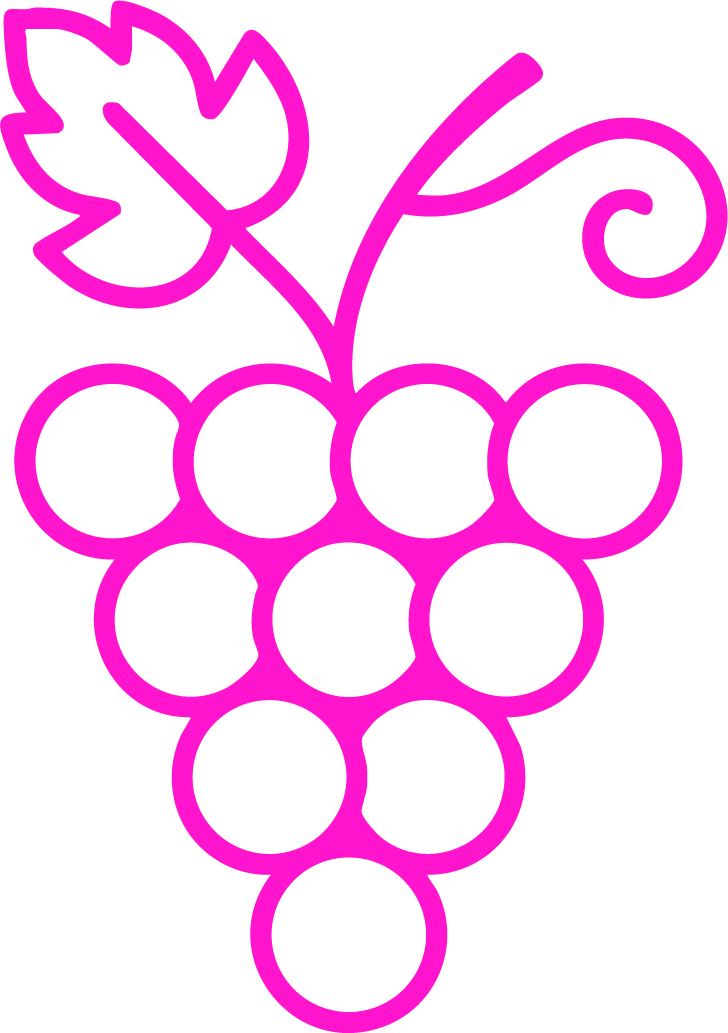Aglianico
🔊 Pronunciation: ah-lyan-ee-koh
🔍 Quick Summary
Aglianico is a bold, age-worthy red grape from southern Italy, famed for producing powerful, structured wines often called the “Barolo of the South.”
📜 History
Origin: Likely born in ancient Greece and brought to southern Italy by settlers around the 6th century BCE — its exact parentage remains unknown.
Greek Legacy: Its name likely derives from Hellenico, linking it to Greek origins and early Mediterranean trade.
Monastic Preservation: Cultivated in Campania and Basilicata during the Middle Ages by monks who prized its power and longevity.
Modern Renaissance: Rediscovered in the late 20th century as producers began emphasizing quality over quantity.
Flagship Wines: Now stars in DOCG wines like Taurasi and Aglianico del Vulture, gaining global respect for its aging potential.
🧠 What to Know
Aglianico is Italy’s southern powerhouse red — rustic in youth, regal with age.
Tannic Titan: High tannin and acidity make it built for aging.
Volcanic Terroir: Thrives in volcanic soils, adding minerality and tension.
Age Brings Elegance: Needs years to soften — transforms into leather, spice, and dried fruit with time.
DOCG Status: Anchors prestigious regions like Taurasi and Aglianico del Vulture.
Food Warrior: Its structure stands up to rich meats and aged cheeses.
📍 Where It’s Found
Primarily grown in sun-drenched southern Italy with unique volcanic soils.
🇮🇹 Taurasi (Campania) – Volcanic + Warm = Elegant, structured reds
Warm Mediterranean | 82–90°F (28–32°C) avg daytime highs
🇮🇹 Aglianico del Vulture (Basilicata) – Volcanic basalt + Cool nights = Earthy, age-worthy wines
Warm continental | 80–88°F (27–31°C)
🇮🇹 Taburno (Campania) – Clay-limestone + Altitude = Fruity, floral expressions
Warm days, cool nights | 78–86°F (26–30°C)
🇮🇹 Molise & Puglia – Sandy-loam + Heat = Riper, more approachable styles
Hot Mediterranean | 85–95°F (29–35°C)
👅 Flavor & Style
Aglianico delivers deep color, bold flavor, and fierce structure — softened beautifully with age..
Color: Deep ruby to garnet with age
Aromas & Flavors:
Primary: Black cherry, plum, dried rose, wild herbs
Secondary: Smoke, cocoa, espresso (especially with oak aging)
Tertiary: Leather, tobacco, dried fig, forest floor (with age)
Structure:
Body: Full
Tannin: High
Acidity: High
Alcohol: Medium to high (13–15%)
🛠 Winemaking Notes
Traditionally rustic, now refined — producers focus on extraction and aging to tame its power.
Long Maceration: Extended skin contact builds structure and complexity.
Oak Aging: Often aged in large Slavonian oak or barrique for 12–36 months.
Bottle Aging: Top wines often require 5–10+ years to soften.
Blending: Typically vinified solo but sometimes softened with Merlot or Primitivo.
🍽 Food Pairing Ideas
Pairs well with bold dishes that match its intensity and tannin.
Savory: Braised short ribs, lamb ragu, wild boar stew
Cheese: Pecorino, Parmigiano-Reggiano, Caciocavallo
Unexpected: Grilled portobello burgers, mole negro, black garlic ramen
🔗 Related Topics to Explore
🍇 Nebbiolo – Northern cousin with tannin and tar
🌍 Volcanic Wines – Intensity from lava-rich soils
🌱 Aged Cheese Pairings – Bold meets umami
⚗️ DOCG System – Italy’s top wine classification



